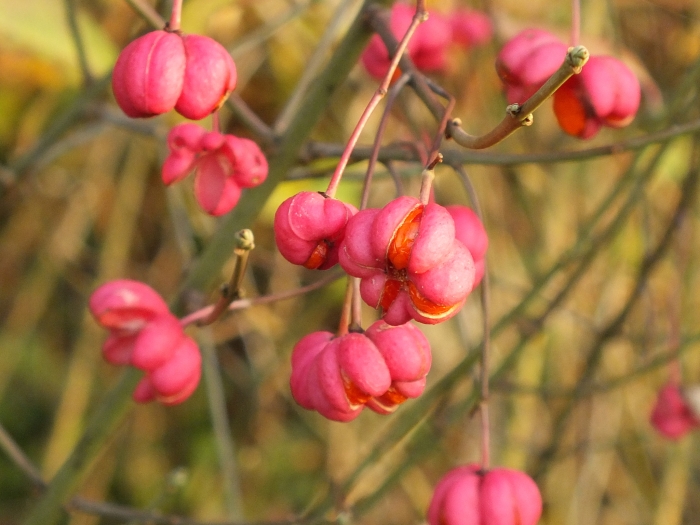European Spindle
(Euonymus europaeus)
European Spindle (Euonymus europaeus)
/
/

pauline_rcht
CC BY 4.0

















































































Estimated Native Range
Summary
European Spindle is valued for its ornamental fruit and vibrant autumn foliage. It is used in gardens and parks, often as a specimen plant or in mixed borders for year-round interest. ’Red Cascade’, a cultivar with particularly striking fruit, has received the Royal Horticultural Society’s Award of Garden Merit. This species thrives in full sun to part shade and is adaptable to a range of soil types, provided they have good drainage. While it requires medium amounts of water, it can tolerate some drought once established. Euonymus europaeus can be susceptible to euonymus scale, an insect pest that may require management. Additionally, it is known to be potentially invasive in some regions, such as parts of the United States, and should be planted with caution outside its native range.CC BY-SA 4.0
Plant Description
- Plant Type: Shrub, Tree
- Height: 12-20 feet
- Width: 10-16 feet
- Growth Rate: Moderate
- Flower Color: Yellow, Green, White
- Flowering Season: Spring, Summer
- Leaf Retention: Deciduous
Growth Requirements
- Sun: Full Sun, Part Shade
- Water: Medium
- Drainage: Slow, Medium, Fast
Common Uses
Bank Stabilization, Bee Garden, Bird Garden, Border Plant, Drought Tolerant, Hedges, Low Maintenance, Rabbit Resistant, Street Planting
Natural Habitat
Mixed forests, woodland margins, hedgerows, and grasslands across Europe and into western Asia and the Caucasus
Other Names
Common Names: European Spindletree, Spindle, Spindletree, Common Spindle, European Euonymus, European Spindle-Tree, Benved, Gewöhnliches Pfaffenhütchen, Pfaffenhütchen, Euroopansorvarinpensas
Scientific Names: , Euonymus europaeus, Evonymus europaeus, Euonymus vulgaris, Euonymus europaeus var. intermedius, Euonymus bulgarica, Euonymus europaeus var. suberosus, Euonymus europaeus f. angustifolius, Euonymus europaeus f. atrorubens, Euonymus europaeus var. macrophyllus
GBIF Accepted Name: Euonymus europaeus L.